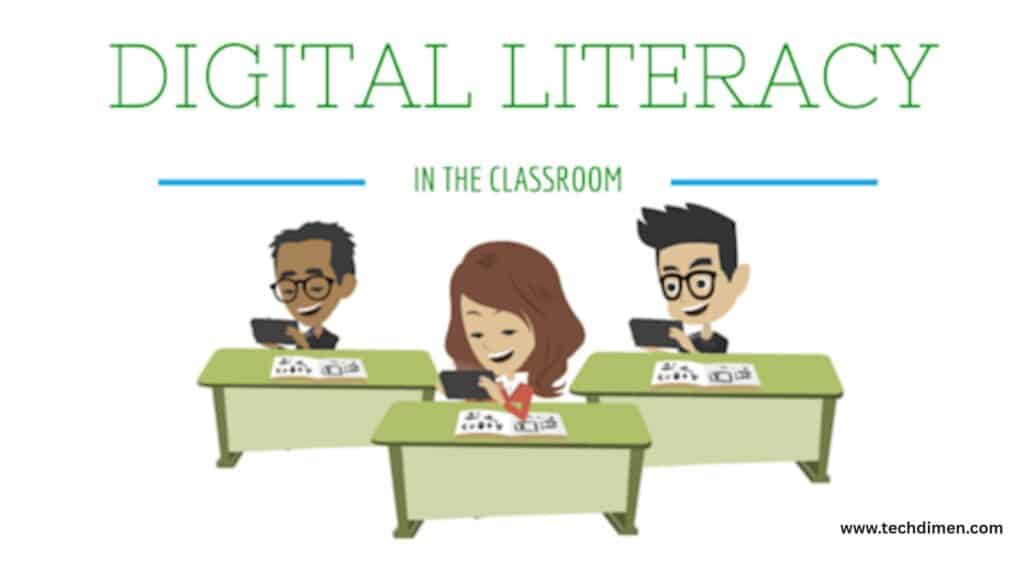Homeschooling has entered a bold new era in 2025, with technology at the heart of this educational evolution. Families who choose to educate at home now have access to powerful tools that weren’t imaginable just a decade ago. From AI-powered tutors to immersive virtual experiences, modern homeschooling is no longer limited to static textbooks or isolated learning. It’s dynamic, interactive, and thanks to technology more personalized than ever before.
Why Technology Matters in Modern Homeschooling

The rise of educational technology has transformed homeschooling from a niche option into a mainstream movement. One of the most significant benefits is customization. Every child learns differently, and with tools driven by artificial intelligence, lessons can now adapt to a learner’s pace, strengths, and interests. This kind of personalization is incredibly difficult to achieve in a traditional classroom setting.
Another major advantage is access. Families can explore thousands of resources from science simulations and virtual museum tours to real-time language lessons with native speakers without ever leaving home. Technology bridges the gap between curiosity and knowledge in ways that are flexible, engaging, and efficient. Whether it’s learning on-the-go, diving deep into a subject, or connecting with expert educators, tech opens doors that conventional homeschooling couldn’t.
Personalized Learning at Your Fingertips
Every child learns differently. Some grasp math concepts quickly, while others excel in writing or science. With digital platforms, parents can tailor lessons to match each child’s learning style and pace. Whether it’s adaptive reading apps or interactive science simulations, technology gives families the tools to customize education in ways traditional classrooms can’t.
Access to a World of Resources
Gone are the days of relying on a single textbook. Now, homeschooled students have access to endless educational content from YouTube tutorials and Khan Academy lessons to virtual museum tours and coding platforms. This opens the door to real-world learning, updated information, and niche topics that textbooks might overlook.
Building Digital Literacy Early On

In a world powered by tech, digital literacy is a must. Using tablets, laptops, and online research tools in homeschooling naturally prepares children for the digital demands of higher education and the modern workforce. It’s not just about knowing how to type it’s about learning how to communicate, create, collaborate, and think critically in digital spaces.
Connecting with Teachers, Tutors, and Peers
Just because a student is homeschooled doesn’t mean they’re learning alone. Virtual classrooms, video calls, and online forums allow homeschooled children to interact with qualified tutors and peers from around the world. Whether it’s a live Spanish class or a collaborative science project, tech enables community-based learning from the comfort of home.
Encouraging Independent Learning
When used wisely, technology empowers students to take control of their education. Platforms like Duolingo, Prodigy, or Tynker turn learning into an interactive experience, encouraging curiosity and self-guided exploration. Kids don’t just memorize facts they dive into subjects that genuinely interest them.
Streamlining Homeschool Administration
For parents, tech simplifies the logistics of homeschooling. Apps for lesson planning, grading, progress tracking, and state requirement reporting make it easier to stay organized. You don’t have to be a certified teacher to create a structured, high-quality learning environment just a connected one.
Preparing for the Future
Technology isn’t just enhancing homeschooling it’s shaping the future of education itself. By integrating it early on, homeschooled students become comfortable with tech-driven learning, better preparing them for online college courses, remote work environments, and tech-heavy careers.
The Smart Tech Behind Modern Homeschooling in 2025

Homeschooling in 2025 isn’t what it used to be. Chalkboards and flashcards have made way for immersive, adaptive, and intelligent tools that turn everyday learning into something extraordinary. From AI tutors to virtual reality field trips, here’s how cutting-edge technology is redefining home education.
AI That Learns Alongside Your Child
Artificial intelligence isn’t just for tech giants anymore it’s at the heart of personalized learning at home. These platforms don’t just check answers. They analyze student behavior, adapt to performance, and deliver tailored instruction in real time.
Whether your child needs extra help in math or wants to breeze ahead in reading, AI platforms automatically adjust the difficulty, suggest exercises, and offer instant feedback. It’s like having a virtual tutor who knows your child’s strengths and struggles better than you do.
Learning That Feels Like Play
Gamified education is one of the biggest reasons kids actually look forward to their lessons. Educational apps now turn assignments into adventures. Whether it’s solving puzzles to unlock levels or earning badges for completed tasks, gamification transforms dry topics into engaging, repeatable challenges.
Instead of dragging their feet through worksheets, students dive into missions. This approach boosts motivation, improves focus, and makes concepts stick long after the screen shuts off.
Virtual Classrooms That Bring the World to You
Gone are the days of homeschooling in isolation. Thanks to powerful video conferencing tools, students can now join live classes, collaborate on projects, and connect with peers from anywhere in the world.
Virtual classrooms create real structure and community. Students interact with teachers, participate in discussions, and even present work all while staying in a personalized home environment that adapts to their pace.
Smarter Curriculum, Made for Home

Modern homeschooling platforms go beyond traditional textbook learning. They offer complete grade-level programs with built-in assessments, video tutorials, progress tracking, and parental controls.
Parents can monitor learning in real-time, make changes when needed, and ensure students stay on track. These platforms are designed to support both struggling learners and advanced students, with content that evolves to meet each child’s academic needs.
Step Inside the Lesson with Virtual Reality
With a VR headset, learning becomes an experience not just a task. Imagine walking through the Great Wall of China during history class or exploring the solar system up close. Virtual reality lets students explore, experiment, and engage with lessons in ways that books never could.
This tech is especially powerful for science, geography, and history, where visuals and context matter most. It sparks curiosity and helps students form lasting connections with complex topics.
Why EdTech is the Heartbeat of Homeschooling
In 2025, tech isn’t just helping homeschooling it’s powering it. From adaptive learning systems to immersive simulations, families now have access to tools once reserved for elite classrooms.
These digital resources offer flexibility, precision, and excitement. They help students thrive, parents teach with confidence, and education evolve with the times.
How to Seamlessly Integrate Tech into Your Homeschool Routine
Introducing technology into your homeschooling setup doesn’t have to be overwhelming. Start by creating a dedicated learning space equipped with reliable devices, internet access, and quiet surroundings. Even a small corner with a laptop and headphones can serve as a functional tech hub.
It’s also important to find the right tools for your child. Every learner is unique some thrive with video content, while others prefer hands-on activities or text-based lessons. Don’t be afraid to try out different apps and platforms until you find a good fit. Many tools offer free trials or freemium versions that allow you to explore before committing.
While screen time is necessary for digital learning, maintaining a healthy balance is key. Include offline activities like outdoor play, creative arts, and reading physical books. Technology should enhance learning not dominate it. Building breaks into your daily schedule helps prevent fatigue and supports overall wellness.
Lastly, connect with other homeschooling families. Online forums and social media groups are fantastic places to share recommendations, troubleshoot tech issues, and discover new resources. Being part of a community can make the homeschooling journey feel less isolated and more rewarding.
Technology can be a game-changer in homeschooling but only when it fits naturally into your daily flow. If you’re constantly switching between apps, losing track of logins, or struggling to keep your child focused, something’s off. When tech is integrated the right way, it becomes almost invisible. It supports your goals, saves you time, and helps your kids engage more deeply with what they’re learning. Here’s how to make that happen.
Start with a Clear Plan, Not Just Cool Tools

It’s tempting to jump into every flashy new app or platform. But before you load up your tablet with ten different tools, stop and ask: What are you trying to accomplish? Maybe your child needs help with math. Maybe you want to streamline lesson planning. Once your goals are clear, choosing the right tech becomes simple. The best tool is the one that solves your specific challenge not the one with the most features.
Choose Platforms That Work Together, Not Against Each Other
One of the biggest mistakes homeschoolers make is using too many disconnected tools. Your calendar’s on one app, your lesson plans on another, and your student’s work scattered across five websites. Instead, look for platforms that integrate with each other or better yet, all-in-one systems like Homeschool Panda or Google Workspace. This makes your daily routine smoother and cuts down on confusion.
Make It Part of the Routine, Not an Add-On
Don’t treat tech as something “extra” you tack on after the main lesson. Fold it into your existing routine. For example, start your morning with a quick quiz on Quizizz instead of printed warmups. Use Duolingo as your go-to for foreign language. Wrap up science with a VR exploration using Merge EDU. The idea is to let tech enhance what you’re already doing not replace your teaching style.
Set Boundaries to Keep Screen Time Healthy
Just because a lesson is digital doesn’t mean it should last all day. Tech is powerful, but kids still need time offline to read physical books, write by hand, and explore outdoors. Set clear blocks of time for tech-based learning, and stick to them. Also, teach your child how to take healthy breaks: stretch, rest their eyes, and check in with how they’re feeling.
Let Your Child Explore and Choose
Empowering your child to help pick the tech they use builds engagement and responsibility. Maybe your daughter prefers reading on Epic! while your son learns best through videos on BrainPOP. Give them options that match their learning style, and they’ll be more likely to stay interested and invested.
Use Tech for Connection, Not Isolation
One underrated benefit of homeschooling tech is how it helps kids connect. Use platforms like Outschool for live group classes, or join online book clubs and co-ops. Learning from other kids and seeing they’re not alone can be incredibly motivating. It’s a great way to bring community into your homeschool, even from a distance.
Keep It Simple Then Build
You don’t have to launch a fully digitized classroom on day one. Start small. Maybe you begin with one tool for reading and one for tracking progress. Once those feel comfortable, slowly expand. Add a platform for project-based learning, a new app for math, or a VR tool for history. The point is to avoid overwhelm for both you and your child.
What the Future Holds for Homeschooling Technology
Looking ahead, homeschooling will likely become even more tech-integrated. Artificial intelligence is expected to become more predictive, understanding not only what a student knows but how they learn best. Virtual and augmented reality will continue to expand, offering more immersive educational experiences at a lower cost.
We may also see more global collaboration students from different countries working together on projects, sharing cultural insights, and attending virtual field trips together. As bandwidth improves and devices become more affordable, the barriers to quality education at home will continue to fall.
Parental roles will evolve as well. Rather than acting solely as instructors, parents will become learning facilitators curating resources, guiding exploration, and supporting their children’s intellectual independence. With technology as a partner, parents can offer a truly enriched and customized educational experience.
The landscape of homeschooling is changing fast and technology is right at the heart of it. If you think today’s tools are impressive, just wait. The next wave of innovation promises to make learning from home more personalized, immersive, and even global. From AI-driven tutors to virtual field trips across continents, the future isn’t just bright it’s interactive.
Smarter Learning Through AI and Machine Learning
Artificial intelligence is already powering tools like adaptive math programs and real-time writing feedback. But we’re only scratching the surface. In the coming years, AI tutors could deliver fully personalized instruction based on your child’s unique pace, interests, and strengths. Imagine a digital assistant that knows when your child is getting frustrated with fractions and adjusts the lesson in real-time to help them succeed.
Virtual and Augmented Reality Will Redefine the Classroom
No more reading about the Roman Empire soon your kids might walk its ancient streets in VR. Virtual and augmented reality are poised to bring lessons to life like never before. Companies like ClassVR and Google Expeditions are already exploring this space, turning living rooms into interactive history museums and science labs. It’s not just engaging it’s unforgettable.
Global Classrooms Will Become the Norm
Online collaboration isn’t new, but in the future, it will go far beyond Zoom calls. Homeschoolers will be able to join virtual classrooms with students from around the world. They’ll work on group projects, participate in cultural exchanges, and learn languages in immersive, real-time environments. Education won’t stop at national borders it’ll be truly global.
Data-Driven Decisions for Parents
One of the more subtle, but powerful, advancements will be better data dashboards for parents. Instead of piecing together test results, reading logs, and assignment scores manually, parents will have access to real-time learning analytics. You’ll know exactly which concepts your child has mastered and which ones need more attention. It’s like having a full teaching team in your back pocket.
Learning Will Happen Anytime, Anywhere
With the rise of mobile-first platforms and cloud-based apps, location will matter less and less. Whether you’re on a road trip, sitting in a coffee shop, or hiking in a national park, learning can travel with you. Homeschooling families are already flexible but future tech will make education even more portable and seamless.
Curriculum Customization Will Be Effortless
Forget one-size-fits-all curriculum packages. The future will let you mix and match resources across subjects, styles, and skill levels with just a few clicks. Want a math curriculum that combines Montessori principles with gamification and real-world finance? You’ll be able to build it and track progress in one place. Customization will become not just possible, but intuitive.
Looking Ahead with Confidence
If you’re homeschooling in 2025, you’re already riding the front wave of educational innovation. The future promises even greater tools, more freedom, and a richer experience for both students and parents. The key? Stay curious. Stay open. And don’t be afraid to experiment with new tools as they emerge. The world of learning is evolving fast and your homeschool is evolving with it.
FAQs: Technology for Homeschooling
1. What kind of tech tools do I need to start homeschooling in 2025?
At the very least, you’ll need a reliable laptop or tablet, high-speed internet, and access to online learning platforms. Depending on your child’s age and curriculum, you might also want tools like a digital whiteboard, e-readers, educational apps, or even VR headsets for immersive lessons. The key is to match the tech with your educational goals not just buy everything out there.
2. Are online resources enough, or do I still need printed textbooks?
That depends on your teaching style and your child’s learning preferences. Many families use a hybrid approach: digital platforms for subjects like math and science (with built-in quizzes and feedback), and physical books for reading and writing. Digital tools offer convenience, but some learners still benefit from the tactile experience of print.
3. Is screen time a concern with tech-based homeschooling?
Yes, and it should be managed carefully. While educational screen time is valuable, it’s still screen time. To strike a balance, mix digital learning with hands-on projects, outdoor activities, and book reading. Set healthy boundaries and take regular breaks to protect your child’s eyes and attention span.
4. Can homeschooling technology work for multiple children at once?
Absolutely. Many platforms offer multi-student accounts with individualized progress tracking. You can tailor each child’s experience based on their grade level and learning speed. Devices like tablets or Chromebooks allow kids to work independently, freeing you up to provide support as needed.
5. Are there free or budget-friendly tech options for homeschoolers?
Yes, plenty. Platforms like Khan Academy, Google Classroom, and Duolingo offer excellent free tools. Open educational resources (OER) are also becoming more common, with free curricula, eBooks, and video lessons. You don’t have to spend a fortune to give your child a quality tech-driven education.
6. How do I ensure my child stays focused while learning online?
Structure helps. Use a daily schedule, set clear goals, and limit distractions by using apps like Freedom or Cold Turkey to block games or social media during school hours. Parental controls and built-in monitoring tools can also help you stay on top of their progress.
7. Is homeschooling tech safe for my child’s privacy?
It can be if you’re selective. Stick to well-known, reputable platforms with clear privacy policies and parental controls. Avoid apps that collect unnecessary data or display ads. Always review privacy settings and check reviews before letting your child use a new tool.
8. Can homeschooling tech help if my child has special learning needs
Yes, and it can be a game-changer. Many apps now include accessibility features like speech-to-text, audio lessons, interactive visuals, or dyslexia-friendly fonts. Adaptive learning platforms also adjust based on performance, making it easier to support students who learn differently.
9. Do I need to be tech-savvy to teach using technology?
Not at all. Most modern homeschooling tools are designed to be user-friendly even for beginners. Many platforms offer tutorials, customer support, and community forums. With a little patience and practice, you’ll pick things up quickly.
10. How can I stay updated with the latest homeschooling technology?
Follow educational tech blogs, join homeschooling Facebook groups, and subscribe to newsletters from trusted edtech companies. Attending virtual conferences or webinars can also expose you to the newest tools and trends without leaving home.
Final Thoughts
Technology has redefined what homeschooling can be. It’s no longer just an alternative to traditional education it’s a powerful, flexible model in its own right. With access to smart tools, immersive experiences, and global resources, homeschooling in 2025 is more exciting and effective than ever before.
By embracing these innovations, families can craft personalized learning journeys that inspire curiosity, nurture critical thinking, and prepare children for a world where adaptability and digital fluency are essential. The tools are already here now it’s about how you choose to use them to unlock your child’s full potential.

Jhon AJS is a tech enthusiast and author at Tech Dimen, where he explores the latest trends in technology and TV dimensions. With a passion for simplifying complex topics, Jhon aims to make tech accessible and engaging for readers of all levels.







